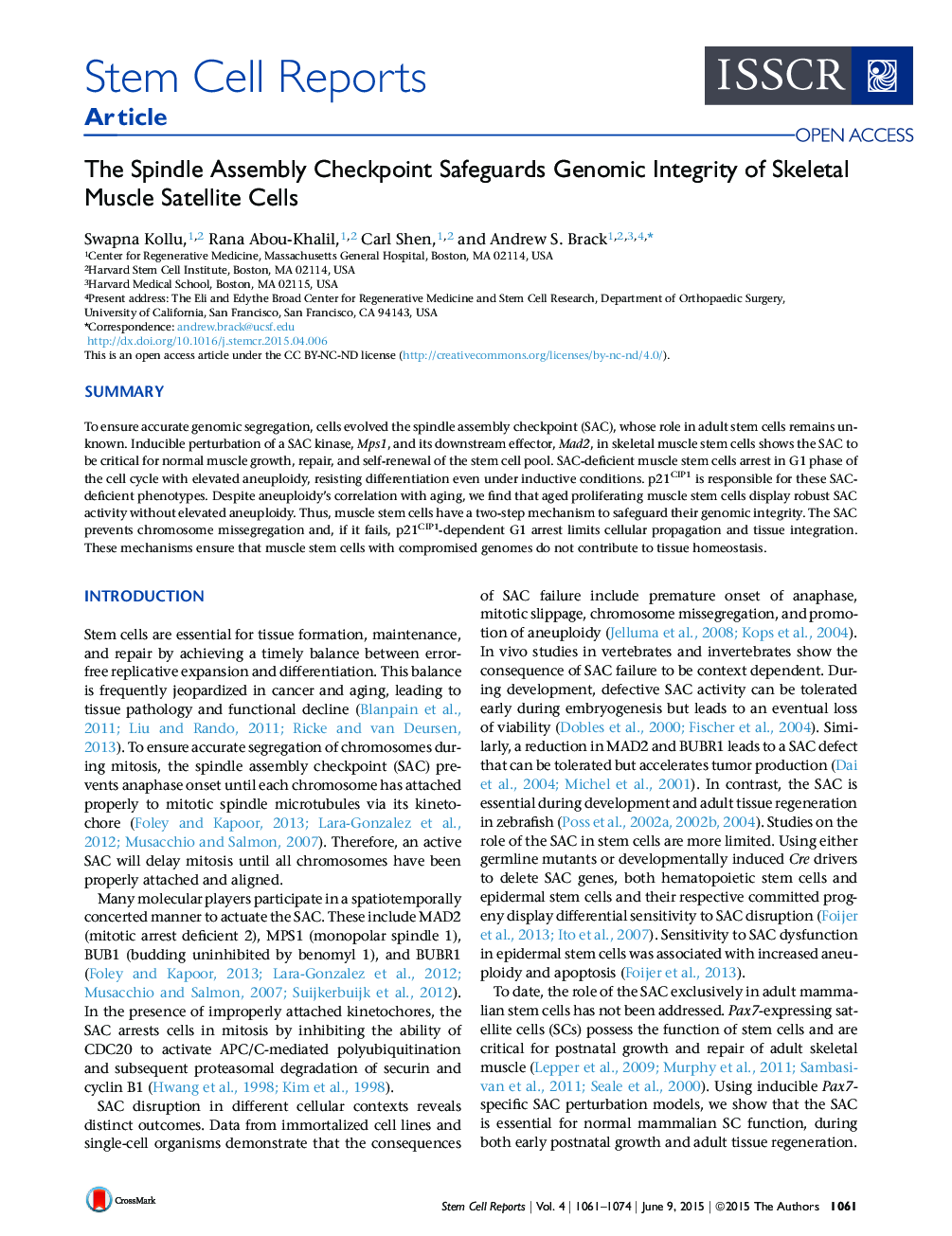| کد مقاله | کد نشریه | سال انتشار | مقاله انگلیسی | نسخه تمام متن |
|---|---|---|---|---|
| 2093546 | 1081965 | 2015 | 14 صفحه PDF | دانلود رایگان |
• Activation turns on spindle assembly checkpoint (SAC) genes in muscle stem cells
• SAC failure leads to G1 arrest, raises aneuploidy, and blocks differentiation
• G1 arrest is mediated through the p53/p21 pathway
• Activated muscle stem cells from aged mice possess a robust SAC
SummaryTo ensure accurate genomic segregation, cells evolved the spindle assembly checkpoint (SAC), whose role in adult stem cells remains unknown. Inducible perturbation of a SAC kinase, Mps1, and its downstream effector, Mad2, in skeletal muscle stem cells shows the SAC to be critical for normal muscle growth, repair, and self-renewal of the stem cell pool. SAC-deficient muscle stem cells arrest in G1 phase of the cell cycle with elevated aneuploidy, resisting differentiation even under inductive conditions. p21CIP1 is responsible for these SAC-deficient phenotypes. Despite aneuploidy’s correlation with aging, we find that aged proliferating muscle stem cells display robust SAC activity without elevated aneuploidy. Thus, muscle stem cells have a two-step mechanism to safeguard their genomic integrity. The SAC prevents chromosome missegregation and, if it fails, p21CIP1-dependent G1 arrest limits cellular propagation and tissue integration. These mechanisms ensure that muscle stem cells with compromised genomes do not contribute to tissue homeostasis.
Graphical AbstractFigure optionsDownload as PowerPoint slide
Journal: - Volume 4, Issue 6, 9 June 2015, Pages 1061–1074
